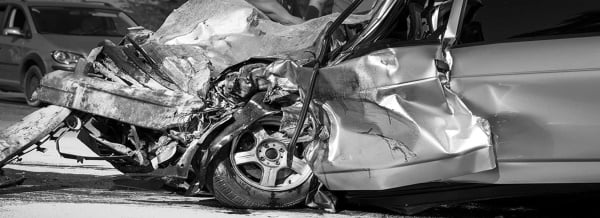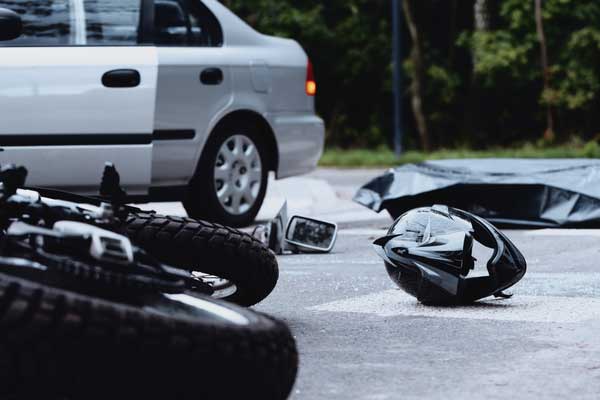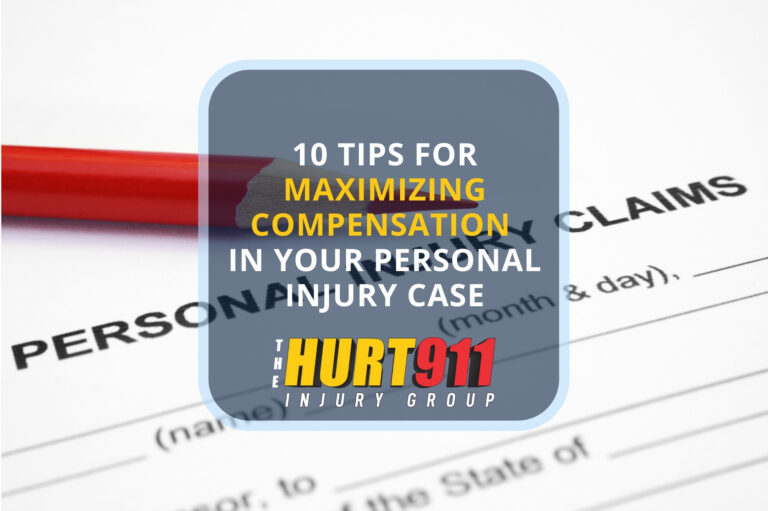A T-bone accident, commonly known as a side-impact collision, is one of Atlanta’s most fatal kinds of accidents. These accidents can cause passengers and drivers to suffer from severe injuries and, in some instances, even result in death. In addition, these accidents are unique, as unlike other kinds of accidents, the victims of a T-bone crash are only separated from the other vehicle by a thin window and door. As a result, the window can shatter to smithereens on impact and shower the passenger in shards of glass, causing serious injuries to those traveling in the car. If you are injured in such a collision, it is imperative to seek immediate medical attention for your injuries. After that, it would help if you considered working with an experienced car accident attorney in Marietta to pursue compensation for your injuries and damages.
In most cases, it is presumed that the colliding driver is at fault in a T-bone accident. However, this is not always true. There are cases wherein the vehicle driver is found to be negligent, and in other cases, a third party could be responsible for the collision. Before we can go into further details on how to prove fault in a T-bone collision, let us understand how such an accident can occur.
A T-bone accident occurs when the front of a car or truck crashes into the side of another vehicle driving down the road. This kind of accident is also known as a side-impact or broadside accident owing to the location of the impact. In most cases, these accidents occur at intersections but can also happen any time a vehicle crosses a street or roadway. As the name suggests, this collision occurs between cars driving perpendicular to each other. If this happens to you, you may have to go to court, and determining fault will become critical to winning the case. In the unfortunate event that you find yourself in such an accident, it is prudent that you solicit the counsel of an experienced personal injury lawyer in Marietta.
How Is Fault Determined in a T-Bone Accident?
While it may sound logical to blame the party that collided with the other car, the law says otherwise. In a T-bone collision, who is at fault is rarely determined by who T-boned whom. Here, the fault is determined depending on which vehicle had the right of way or, in other words, had the right to be moving forward. As per traffic laws, both cars involved in the collision could not have the right of way at the same time. Therefore, one vehicle had the right of way while the other violated the traffic rules.
The vehicle that did not have the right of way will be held at fault in a T-bone accident. However, it is not uncommon for the car that did have the right of way to be held partly responsible for not being alert on the road. Unfortunately, there is rarely any evidence found at the scene that can precisely point out which vehicle had the right of way.
Who is at fault in such a side impact accident boils down to what witnesses and the drivers claim to have happened? If both drivers claim that each had the right of way, the insurance companies and police will have to go with the party with a more credible explanation in the absence of witnesses who can second their claims.
If you find yourself in a T-bone accident, be sure to hire a car accident lawyer in Marietta. Your car accident lawyer in Atlanta will use evidence to prove that the other party was at fault so that you can receive a fair compensation for your injuries. However, it is important to remember that during this process, the at-fault party’s insurance company will do what they can in their means to trick you into making statements that will allow them to place the fault on you.
Who is at Fault in an Intersection Accident?
According to reports published by NHTSA, most side-impact accidents happen at intersections that have a traffic control device. This can happen when drivers make assumptions about what the other drivers on the road will do next. For instance, one of the cars involved in the accident may incorrectly assume that they can drive since they have the right of way when they do not. As a result of this assumption, the car may move across the intersection and right unto oncoming traffic, causing a collision.
Listed Below Are Some Common T-bone Intersection Accidents That Occur in Atlanta:
Left Turn Accidents – A left turn T-bone accident that occurs at an intersection could be the fault of either driver. The vehicle making the left turn may assume that the red light turned green when it is still red. So, when the car makes a left turn, it might collide with another car going in the opposite direction and has the green signal! On the other hand, the reverse can happen too. For example, the driver making the left turn may indeed have the green light and make the turn.
However, the car traveling in the opposite direction may think that the light is green when it is red and therefore may cause an accident. In either way, the impact is generally severe since one of the two cars is bound to be traveling at least 40 miles per hour.
Running a Red Light – This is yet another common occurrence on the roads. In this kind of T-bone accident, the drivers are generally perpendicular to one another. If both of them think they have the green light and right of way, they are destined to cross each other’s path. Both cars will be traveling at the full speed limit set for the road and are bound to meet with a bad collision. The driver that had the right light will be held liable for the accident.
Running a Stop Sign – A side impact collision may also happen at a 4-way stop, in some cases. Since one or both cars come to a complete halt before entering the intersection, this gives the cars enough time to recognize what is about to happen and stop in time to avert an accident. Though this is not common, these kinds of accidents do occur, especially in the late hours of the night or when one of the drivers is under the influence of alcohol or drugs.
According to NHTSA, the most common type of T-bone or side-impact accident reported involves one vehicle having a stop sign and the other having no control device. In such a scenario, it is relatively easy to determine which party is at fault. The car that had the stop sign will be at fault since it did not have the right of way.
Who is at Fault When There is No Intersection?
In some cases, a T-bone accident can occur when there is no intersection. In such a scenario, the car crossing the roadway will be deemed at fault and responsible for the accident since they did not have the right of way.
Leaving a Parking Lot – A T-bone accident may also occur in a parking lot. When one vehicle leaves the parking lot that does not have any traffic control device, it falls upon the vehicle’s driver to ensure that the traffic is clear in either direction before he crosses the street. If the driver fails to see a car coming and pulls out at high speed to cross the road, he may cause a T-bone accident.
While Making a U-Turn – Even the most experienced driver will concede that making a U-turn can be tricky at times. If the driver making a U-turn fails to realize that another vehicle is coming from the opposite direction, he or she may pull right into traffic and get hit on the side. In this situation, the driver making the U-turn will be held at fault.
Can the Vehicle That Has the Right of Way Be at Fault?
In most cases, the vehicle, be it a car or truck that does not have the right of way, will be at fault in a side-impact accident. That said, the other vehicle that had the right of way may also have some fault. This is because the vehicle that has the right of way also has the duty to pay close attention to the road and look out for drivers that may cut across traffic to avoid a collision. In certain cases, product defects or malfunction can also lead to a T-bone accident. If you believe that you were not at fault and simply lost control of your vehicle, a truck accident attorney in Atlanta can help you prove that malfunction led you to run through a red light or crash into another vehicle.
Scenarios When a Car With the Right of Way May Have Some Fault:
- When the driver fails to turn on headlights after sunset
- When the driver was driving above the speed limit
- When the driver was distracted by texting or talking on his phone
- When the driver crosses many lanes before the T-bone accident occurs
- When the driver was under the influence of drugs or alcohol
- When brake failure was due to the vehicle not being maintained
When Will Third Parties Have Some Fault?
There are instances when a third party may also be held liable for the T-bone accident. For instance, a car repair shop may have done a shoddy job at fixing the brakes on one of the cars involved in the crash. Or the headlamps that were recently replaced were faulty. Faulty brakes, defective airbags, accelerator malfunctions could lead to serious T-bone collisions. In such cases, the repair shop or the manufacturer may have some fault and may be held liable for the accident.
A non-functional traffic control device can also play a big role in a T-bone crash. For example, it is not uncommon to find street lights that are shut down and give no warning signal to drivers on the road. In such cases, drivers may fail to realize they are entering an intersection; the crash can therefore be attributed to the fault of one or both drivers or the traffic control device.
In some cases, the accident may not be due to either driver’s negligence. This can happen when the traffic signal malfunctions and gives both drivers a green signal. A T-bone collision may also occur when one driver gives a turn signal, and the crossing driver too is given the green light.
Filing a Lawsuit After a T-Bone Accident
When filing a T-bone accident settlement, your personal injury lawyer in Atlanta will have to prove fault before a settlement amount can arrive. The kind of damages that you will be eligible to collect will depend on various factors, such as the severity of your injuries, your ability to resume work, who was at fault, and the statutory governing your state. You may be eligible to receive some compensation in certain cases even if you were partly at fault and sustained grievous injuries and substantial financial expenses or losses. It is also important to remember that T-bone accident victims have only 2 years from the date of the collision to file a claim, after which the statute of limitations will expire. Acting quickly will also help you win your case, as witnesses are likely to forget about the incident as time passes. Therefore, it is imperative that you hire a reputed car accident lawyer in Marietta to have the best chance at success.
If you or someone you love were in a T-bone accident and sustained severe injuries, then waste no time, contact The Hurt911® Injury Group today. Our attorneys have years of experience in representing victims of T-bone accidents and have helped our clients receive several thousand in compensation. Call us today at 404-687-9000 for a free consultation.








